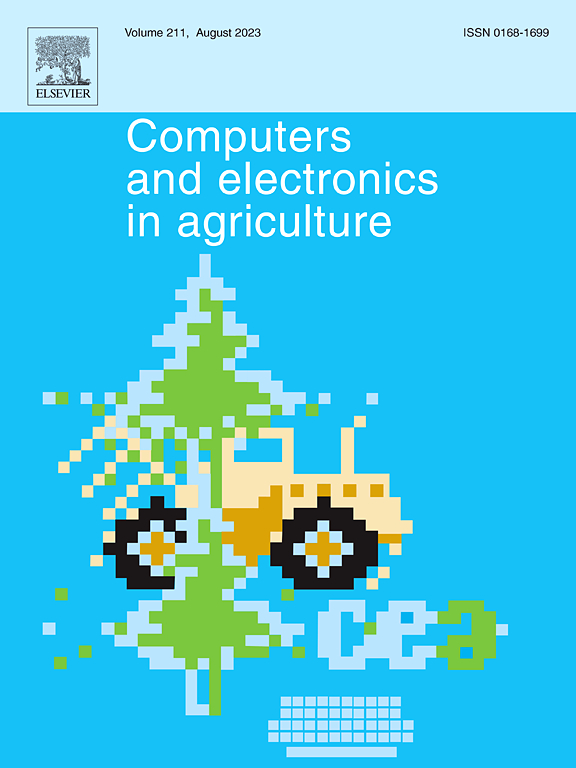A parallel dual-arm robotic control method of white asparagus based on moving-looking-harvesting coordination and asynchronous harvest cooperation
IF 7.7
1区 农林科学
Q1 AGRICULTURE, MULTIDISCIPLINARY
引用次数: 0
Abstract
For an efficient, low-damage selective harvesting robot for white asparagus, a parallel dual-arm control method based on moving-looking-harvesting coordination and asynchronous spears harvesting cooperation is proposed. This approach aims to enable continuous, non-stop harvesting along the ridge while minimizing damage to the spears. Firstly, a parallel harvesting mode with independent harvesting areas for the dual arms was designed to reduce collisions between the robotic arms and simplify control complexity. Secondly, an efficient dual-arm cooperative harvesting algorithm, aimed at load balancing for multiple randomly distributed asparagus, was proposed. Then, a coordinated moving-looking-harvesting control strategy was developed to synchronize the robot’s movement, asparagus identification, and the harvesting operation using the two end-effectors. Finally, a prototype of the selective harvesting system was constructed, and its performance was evaluated in the field. The simulation analysis of the cooperative harvesting algorithm indicated that the shortest-time-based first-see-harvest (ST-FSH) path planning strategy outperformed two alternative methods. The dual-arm harvesting saved 45.17 % of the time and increased the harvest success rate by 3.19 % compared with the single-arm harvesting, while maintaining workload balance. Field trials demonstrated an asparagus recognition rate of 82.6 %, with an average detection time of 33 ms, a successful harvest rate of 92.3 % for recognized asparagus, and average robotic arm movement time and end-effector harvest time of 1.7 s and 5.7 s, respectively. The system achieved an asparagus damage rate of 7.2 %. The results confirm the feasibility of the proposed efficient, low-damage harvesting strategy, providing a solid foundation for the development of selective harvesting robots for white asparagus.
求助全文
约1分钟内获得全文
求助全文
来源期刊

Computers and Electronics in Agriculture
工程技术-计算机:跨学科应用
CiteScore
15.30
自引率
14.50%
发文量
800
审稿时长
62 days
期刊介绍:
Computers and Electronics in Agriculture provides international coverage of advancements in computer hardware, software, electronic instrumentation, and control systems applied to agricultural challenges. Encompassing agronomy, horticulture, forestry, aquaculture, and animal farming, the journal publishes original papers, reviews, and applications notes. It explores the use of computers and electronics in plant or animal agricultural production, covering topics like agricultural soils, water, pests, controlled environments, and waste. The scope extends to on-farm post-harvest operations and relevant technologies, including artificial intelligence, sensors, machine vision, robotics, networking, and simulation modeling. Its companion journal, Smart Agricultural Technology, continues the focus on smart applications in production agriculture.
 求助内容:
求助内容: 应助结果提醒方式:
应助结果提醒方式:


